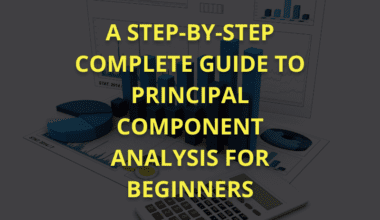Summary: In 2024, mastering essential Data Science tools will be pivotal for career growth and problem-solving prowess. Tools like Seaborn, R, Python, and PyTorch are integral for extracting actionable insights and enhancing career prospects. Platforms like Pickl.AI offer the best online data science programs, focusing on practical learning and industry relevance.
Introduction
Are you curious about exploring Data Science tools in 2024? Rest assured, learning about the tools required for data science will hugely benefit you. These tools are not merely instruments but keystones pushing innovation and illuminating insights.
In the contemporary digital world, mastering Data Science tools isn’t just an option; it’s a necessity. Businesses are rapidly turning towards data-driven decision-making. That’s why professionals with adept knowledge of these tools stand at the forefront.
Investing in professional certification courses is equally essential to keep up with the changing technologies and tools. Thus, we’ll look at a platform that provides the best online Data Science courses. These courses serve as guiding beacons, refining skills and ensuring relevance in the field.
Why Learn Tools of Data Science?
In the ever-evolving landscape of technology, mastering tools is more than just a professional choice—it’s a strategic move towards career growth and problem-solving prowess. Here’s why delving into these tools is pivotal:
Extraction Of Actionable Insights
Data Science tools act as gateways to unlock valuable insights buried within vast datasets.
By wielding these tools adeptly, one can uncover patterns, trends, and correlations crucial for informed decision-making. From market analysis to predictive modelling, extracting actionable insights empowers professionals to drive impactful change.
Enhanced Career Prospects
Proficiency in tools catapults career prospects to new heights.Employers seek individuals with the technical prowess to navigate complex datasets and derive meaningful conclusions.By honing these skills, individuals position themselves as invaluable assets in a data-driven world, opening doors to lucrative job opportunities and career advancement.
Sharpened Problem-solving Abilities
Data Science tools serve as instruments in the toolkit of problem solvers, offering efficient means to tackle complex challenges. Through hands-on experience with these tools, individuals refine their analytical thinking and problem-solving abilities. Armed with these skills, professionals can confidently and precisely address real-world issues across diverse domains, from healthcare to finance.
Top Tools Used in Data Science
Seaborn
While Seaborn builds upon Matplotlib, it offers a more user-friendly interface with pre-built themes and styles, allowing you to create aesthetically pleasing and informative visualizations with less code. It also excels at creating specific statistical plots like violin plots, joint plots, and pair plots, making it a favourite for exploratory data analysis.
Applications: It is used for exploring and understanding data through various visualisation techniques such as scatter plots, bar plots, and heat maps.
Recent advancements: In 2024, Seaborn has seen enhancements in its compatibility with the latest versions of Python, ensuring smoother integration with other Data Science tools and frameworks.
R
R boasts a vast collection of statistical packages, making it a go-to choice for researchers and statisticians. It integrates seamlessly with other statistical software, allowing for a smooth workflow. The active R community constantly develops new packages, keeping it at the forefront of statistical computing.
Applications: It is extensively used for statistical analysis, data visualisation, and machine learning tasks such as regression, classification, and clustering.
Recent Advancements: The R community continues to release updates and packages, expanding its capabilities in data visualisation and machine learning algorithms in 2024.
Python
Python’s easy-to-learn syntax and extensive ecosystem of Data Science libraries (like those mentioned here) make it a popular choice for beginners and professionals alike. It allows rapid prototyping and iteration, making it ideal for exploring ideas and testing approaches.
Applications: This programming language is used for data manipulation, analysis, visualisation, and building machine learning models. Its simplicity makes it a preferred choice for beginners and professionals alike.
Recent Advancements: Python’s Data Science ecosystem continues to evolve rapidly, updating libraries like NumPy, Pandas, and sci-kit-learn and enhancing performance and functionality.
PyTorch
It is an open-source machine learning library for Python developed by Facebook’s AI research group. It provides tensor computations with strong GPU acceleration.
PyTorch’s dynamic computational graph allows for more flexibility in building and debugging complex deep-learning models compared to some other frameworks. It also integrates well with other Facebook AI tools, making it a favourite for researchers working in that ecosystem.
Applications: PyTorch is widely used for building deep learning models, including neural networks for image classification, natural language processing, and reinforcement learning.
Recent Advancements: In 2024, PyTorch has seen improvements in its distributed training capabilities, making it more scalable for large datasets and complex models.
Jupyter Notebook
It is an open-source web application that allows you to create and share documents containing live code, equations, visualisations, and narrative text. Jupyter Notebook excels at combining code, equations, visualizations, and explanatory text into a single document.
This makes it a powerful tool for sharing data analysis workflows, collaborating with others, and presenting findings in a clear and interactive way.
Applications: It is commonly used for data cleaning, exploration, and prototyping of machine learning models, enabling interactive and collaborative Data Analysis workflows.
Recent Advancements: Jupyter Notebook has been updated with new features and extensions, enhancing its usability and integration with other tools in 2024.
Scikit-learn
Scikit-learn is a simple and efficient tool for data mining and analysis, built on NumPy, SciPy, and matplotlib. It provides a range of supervised and unsupervised learning algorithms.
Also, it provides a well-documented and easy-to-use set of Machine Learning algorithms. It offers a streamlined workflow for data preparation, model training, evaluation, and tuning, making it a valuable tool for getting started with machine learning projects.
Applications: Scikit-learn is used for classification, regression, clustering, dimensionality reduction, and model selection.
Recent Advancements: Updates to scikit-learn in 2024 have focused on improving model interpretability and scalability, making deploying machine learning models in production more manageable.
To learn more about the Scikit-learn cheat sheet, click here.
SciPy
It is a scientific computing library for Python that builds on NumPy. It provides many user-friendly and efficient numerical routines such as optimisation, integration, interpolation, and linear algebra.
SciPy builds upon NumPy, providing additional functionalities for scientific computing tasks like optimization, integration, and solving differential equations. It’s a powerful tool for tackling complex mathematical problems that arise in various scientific fields.
Applications: SciPy is used for scientific and technical computing tasks, including signal processing, image processing, and solving differential equations.
Recent Advancements: Recent updates to SciPy have included performance improvements and new algorithms, enhancing its capabilities for solving complex mathematical problems in 2024.
Matplotlib
While Matplotlib offers a lower-level interface compared to Seaborn, it provides a high degree of customization for creating intricate plots. This makes it a favourite for researchers who need highly specific visualizations for their publications.
Applications: Matplotlib creates static, animated, and interactive visualisations for Data Analysis, scientific research, and educational purposes.
Recent Advancements: Matplotlib has seen updates in its backend rendering engines and support for new file formats, improving rendering speed and compatibility with other tools in 2024.
NumPy
Its efficient multidimensional arrays and mathematical functions are the bedrock for many Data Science libraries in Python. Its speed and memory optimization make it crucial for handling large datasets and performing complex calculations.
Applications: NumPy is used in Data Analysis and machine learning for numerical computations, array manipulation, and linear algebra operations.
Recent Advancements: NumPy’s latest releases have focused on optimising performance for large-scale array operations and improving compatibility with other libraries, making it more efficient for data processing in 2024.
Pandas
Pandas’ DataFrames provide a powerful way to structure, manipulate, and analyze tabular data. It offers functionalities for data cleaning, filtering, merging, and transformation, making it an essential tool for data wrangling tasks. Pandas is a fast, robust, flexible, easy-to-use open-source Data Analysis and manipulation library built on Python.
Applications: Pandas are used for data cleaning, transformation, and analysis, providing data structures and operations for manipulating structured data and time series.
Recent Advancements: Pandas has seen updates in its memory usage optimisation and support for handling larger datasets, improving efficiency and scalability in 2024.
How Do You Choose The Right Tools Required For Data Science?
Choosing the appropriate tools is paramount to success when venturing into Data Science. Here’s a simplified guide to making informed decisions:
Project Requirements Assessment
Identify the specific needs of your project, such as data volume, complexity, and objectives.
Ensure the selected tools align with these requirements for smooth Data Analysis and interpretation.
Compatibility Check
Evaluate the compatibility of tools with existing infrastructure and technologies within your organisation. Opt for tools seamlessly integrating with your current systems to minimise disruptions and enhance workflow efficiency.
Industry Standards Consideration
Research prevalent industry standards and best practices. Prioritise tools widely adopted and endorsed within your sector to ensure compliance and interoperability.
Learning Curve Evaluation
Assess the ease of learning and proficiency development associated with each tool. Prioritise user-friendly platforms with extensive documentation and tutorials to expedite skill acquisition.
Community Support Availability
Investigate the availability and responsiveness of online communities, forums, and user groups associated with each tool. Choose tools with active and supportive communities to facilitate troubleshooting and knowledge-sharing.
Integration Capabilities
Examine the interoperability of tools with other software and data sources. Prioritise tools that offer robust integration capabilities to streamline data pipelines and enhance collaboration across teams.
Frequently Asked Questions
What Are The Essential Data Science Tools Used In 2024?
In 2024, crucial tools encompass Seaborn, R, Python, PyTorch, Jupyter Notebook, Scikit-learn, SciPy, Matplotlib, NumPy, and Pandas. These tools facilitate data visualisation, statistical analysis, and machine learning, which are indispensable for extracting insights from complex datasets.
How Do I Choose The Best Data Science Course Online For Beginners?
Opt for professional certification courses catering to beginners, like those offered by Pickl.AI. These courses provide hands-on training, covering fundamental tools used in Data Science. Pickl.AI’s curriculum is industry-aligned, ensuring learners gain practical skills for real-world problem-solving in Data Science.
Why Are Tools Required For Data Science Necessary?
Data Science tools are essential for efficient Data Analysis, visualisation, and modelling. By mastering these tools through professional certification courses, individuals enhance their career prospects and problem-solving abilities, making them invaluable assets in the data-driven landscape of today’s industries.
Closing Thoughts
Data Science continually evolves, emphasising the pivotal role of proficient use of Data Science tools. Whether you’re a beginner or a seasoned professional, mastering the tools used in Data Science is essential for career growth.
Platforms offering the best online Data Science courses, tailored for beginners and professionals, provide a pathway to acquiring the necessary skills. Investing in professional certification courses ensures relevance in the field and opens doors to lucrative opportunities.
With a strategic approach to learning and practical application, individuals can unlock the full potential of tools and drive impactful change in diverse domains.
Choose Pickl.AI To Learn Data Science Tools
Discover the best Data Science courses online with Pickl.AI for beginners and professionals seeking certification. In Data Science education, theory often overshadows practical application.
Many courses focus solely on theoretical concepts, leaving learners ill-equipped for real-world challenges. Recognising this disparity, Pickl.AI emerged to fill the void, providing practical, industry-aligned training in Data Science.
Pickl.AI believes in empowering learners with practical skills that transcend theory. Join us to unlock the full potential of Data Science tools and embark on a journey towards impactful problem-solving.





